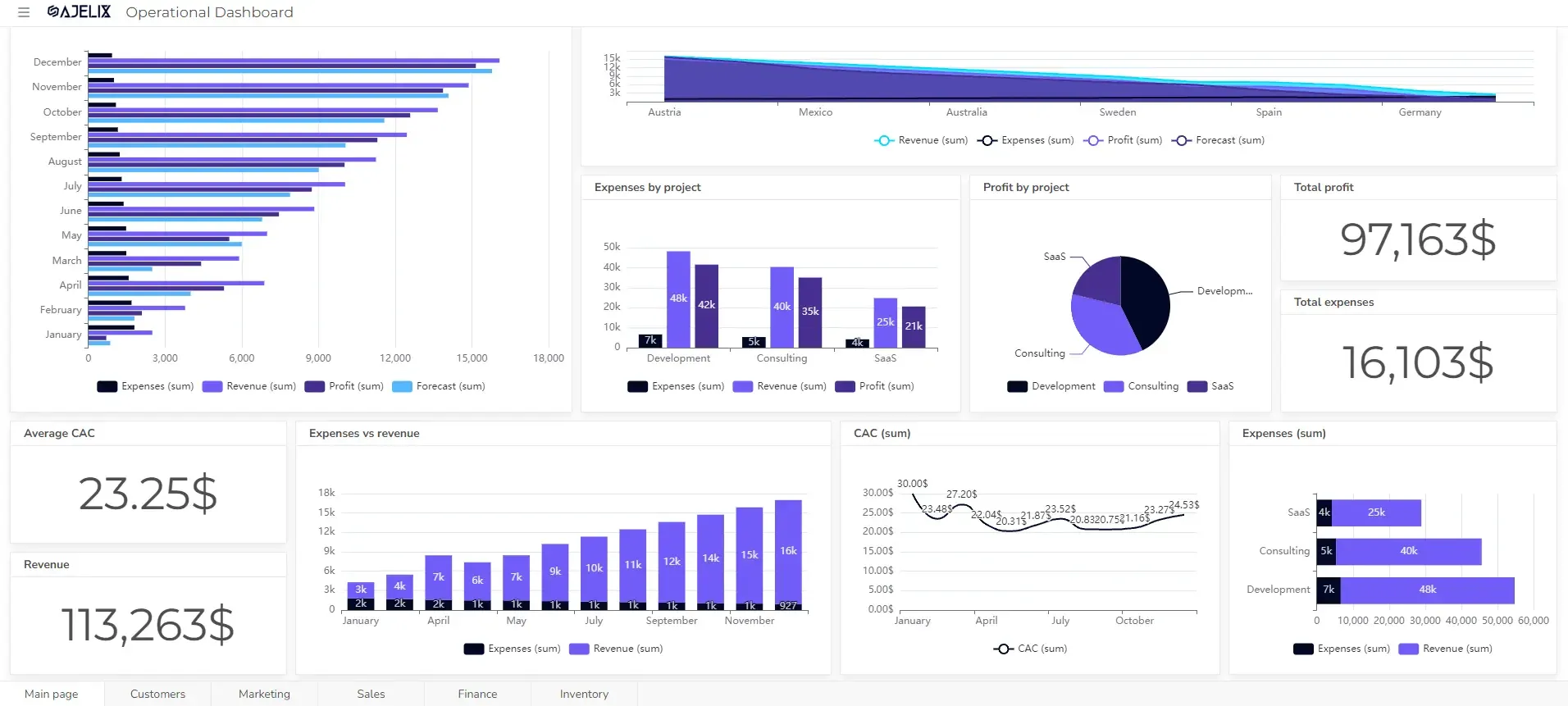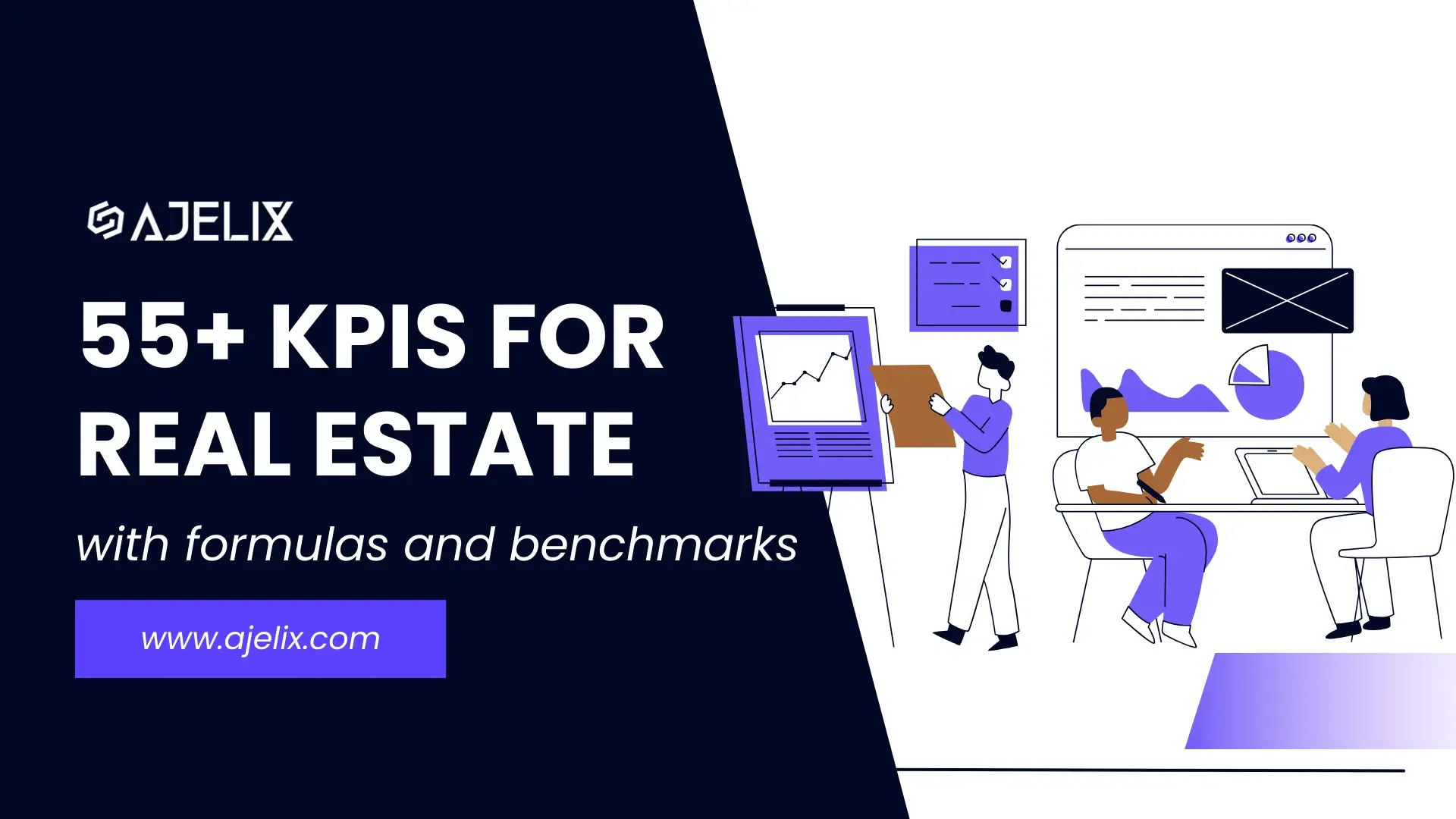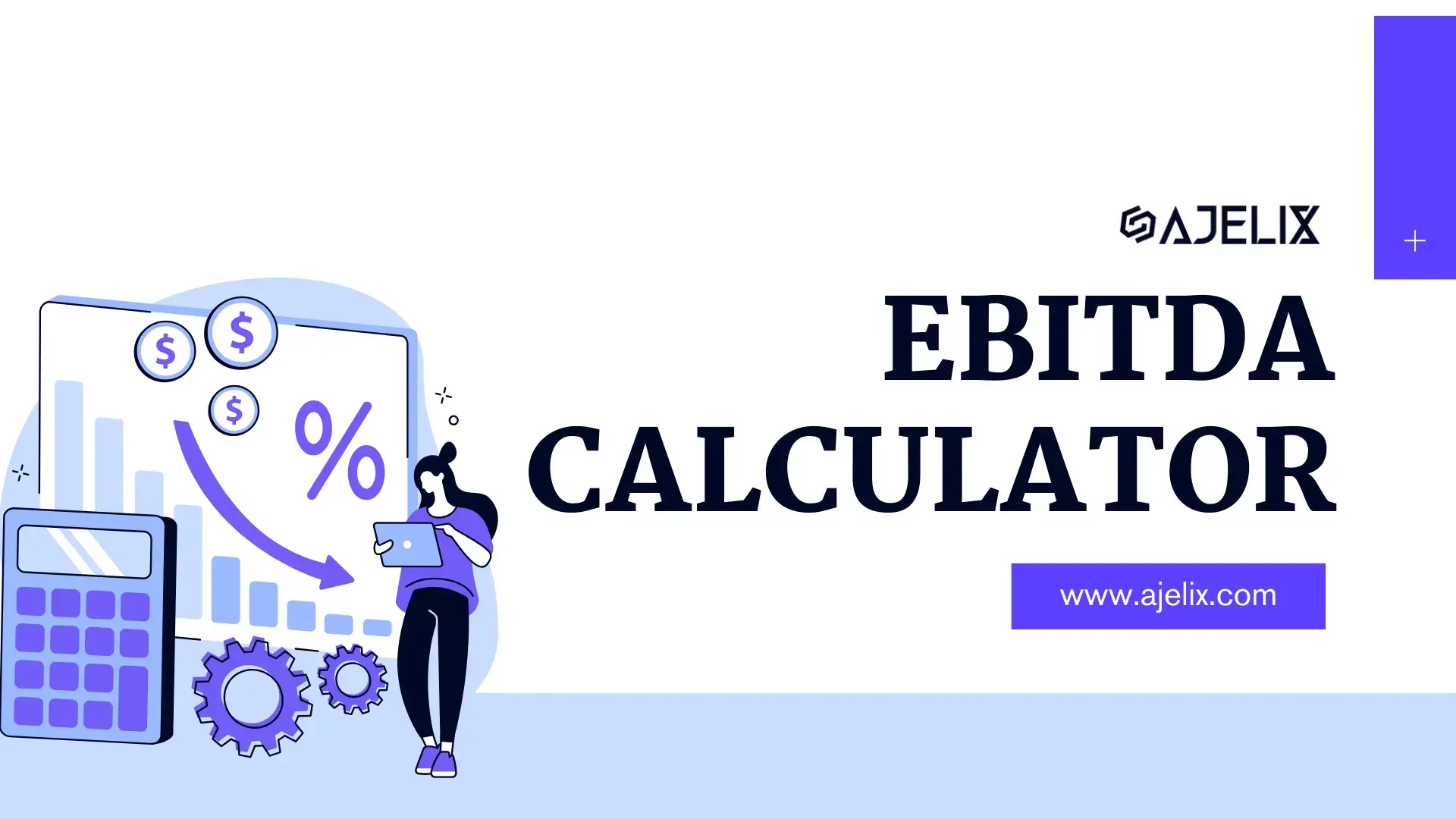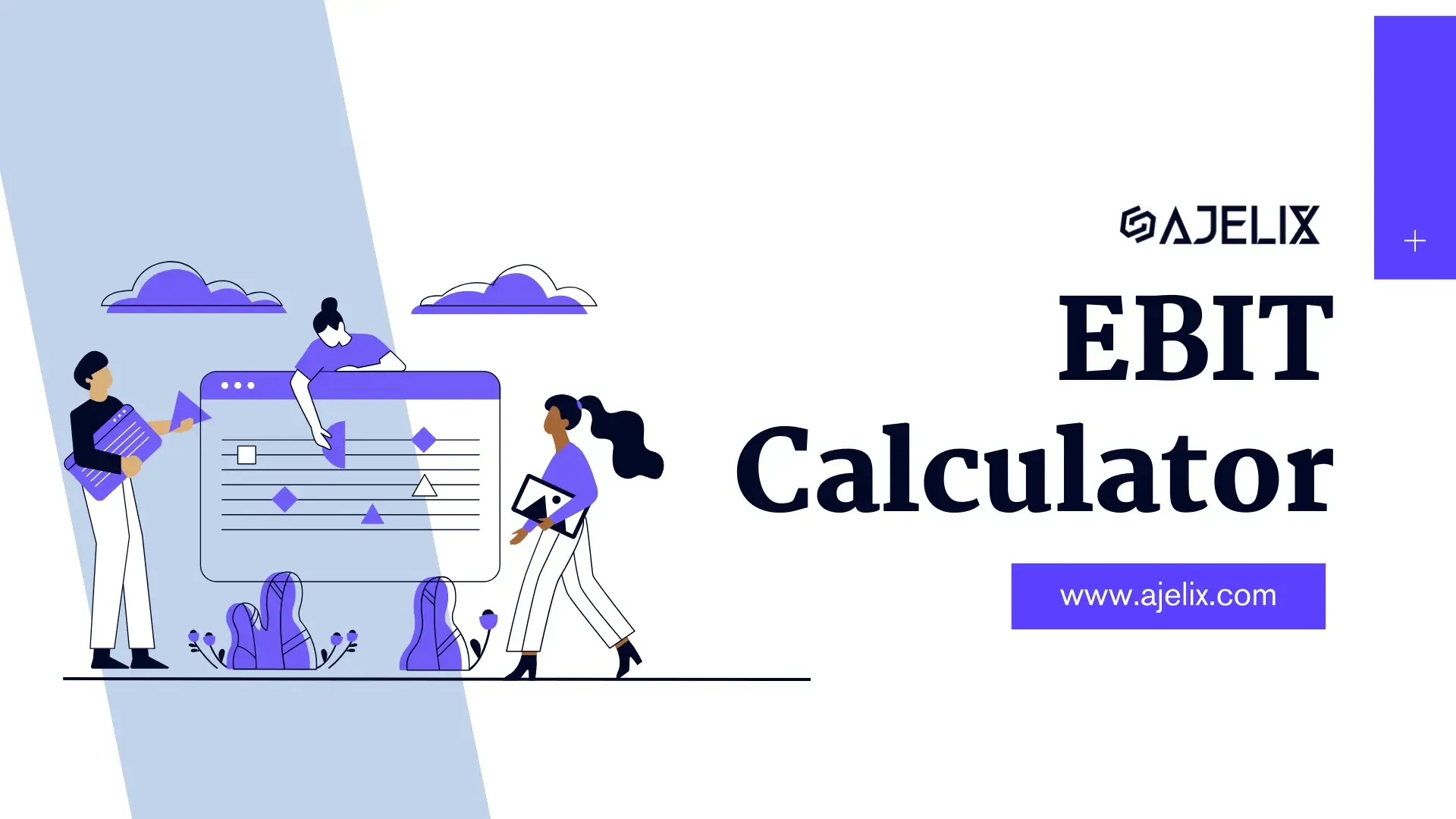- Home
- Data Visualization
- Tools
- AI Data Analyst
- Excel Formula Generator
- Excel Formula Explainer
- Google Apps Script Generator
- Excel VBA Script Explainer
- AI VBA Code Generator
- Excel VBA Code Optimizer
- Excel VBA Code Debugger
- Google Sheets Formula Generator
- Google Apps Script Explainer
- Google Sheets Formula Explainer
- Google Apps Script Optimizer
- Google Apps Script Debugger
- AI Excel Spreadsheet Generator
- AI Excel Assistant
- AI Graph Generator
- Pricing
- Resources
-
Author:
Business Intelligence vs Data Analytics: The Difference
-
Last updated:November 29, 2025
-
Tags:

Explore other articles
- 7 Productivity Tools and AI Plugins for Excel
- Julius AI Alternatives: Top 5 Choices 2026
- No Code Analytics: Top Tools in 2026
- Automation Tools for Excel in 2026: Built-In & Third-Party
- 5 Healthcare Data Analytics Trends 2026
- Best Analytics Platform For Startups In 2026
- 15 Best AI Tools For Startups In 2026 We Tried
- 7 Best AI Tools for Excel Data Analysis (2026 Comparison)
- AI Data Intelligence For Workspace
- Conversational Analytics & AI
Create dashboards fast & easy
Confused about the question of Business Intelligence vs Data Analytics? You’re not alone! While these fields often blur together in practice, knowing their differences is crucial for making smarter decisions.
In this article, we’ve surveyed both industry experts and non-data professionals to uncover common misconceptions. Plus, our job offers experiment reveals insights about what employers really want from BI specialists and data analysts.
Let’s dig in!
What is Business Intelligence?
Business Intelligence (BI) refers to the strategies, methodologies, technologies, and tools used by organizations to collect, analyze, and transform raw data into actionable insights.
Example of BI Tool in Use:

At its core, BI answers the essential questions about what’s happening in a business: In which countries are the main clients? How do current sales compare to last quarter? Through intuitive dashboards and automated reports, BI creates the single source of truth that organizations rely on for day-to-day decisions.
You might want to dig deeper: 101 Guide on Business Intelligence
Research published in the International Journal of Data and Network Science points out a common problem: BI strategies are often only discussed at the managerial level. As a result, employees are less likely to adopt them, collaboration suffers, and overall competitive performance takes a hit.
BI Platforms like Microsoft Power BI and Tableau are well-respected and full of strong features, but they are hard to learn. For many non-technical users, they seem overwhelming, making it hard to drive adoption across teams.
You might be interested in investigating 7 Power BI Alternatives
One of the alternatives is Ajelix BI Platform, especially designed for non-techies to bridge the gap between strategy and everyday users. With its focus on easy-to-use and automation features, Ajelix BI helps more people use BI in their daily decisions.
See Ajelix BI in Action:
What is Data Analytics?
Data Analytics (DA) takes the foundation of BI and pushes further, moving beyond historical reporting to uncover deeper insights and predict future outcomes. It’s the process of applying statistical methods and modeling techniques to detect patterns, test hypotheses, and forecast trends.
If you want to become a Data Analyst, start with research of this field and gain a deep understanding of all four types of DA: descriptive, diagnostic, predictive, and prescriptive analytics.
You might be interested: Comparison of 5 Best AI Data Analytics Tools
Insights from data analytics often translate into specific business actions. When a company makes a surprisingly strategic move, there’s often a data analyst behind it who connected dots that weren’t obvious to everyone else.
In simple words? Business Intelligence answers to “What happened?” while Data Analytics answers to the follow-up: “So what does that mean for tomorrow?“
What is the Difference between Business Intelligence and Data Analytics?
First, we should be honest with you: these days, the line between business intelligence and data analytics is pretty blurry. The tools are often the same, e.g., Ajelix works for both: whether you’re building dashboards or digging into data patterns. In addition, quite often skills overlap, and in many businesses, especially small companies, people end up doing a bit of both.
For learning purposes, though, you should understand the key differences. So, let’s imagine you run an online store.
This is what kind of data might be relevant for you:
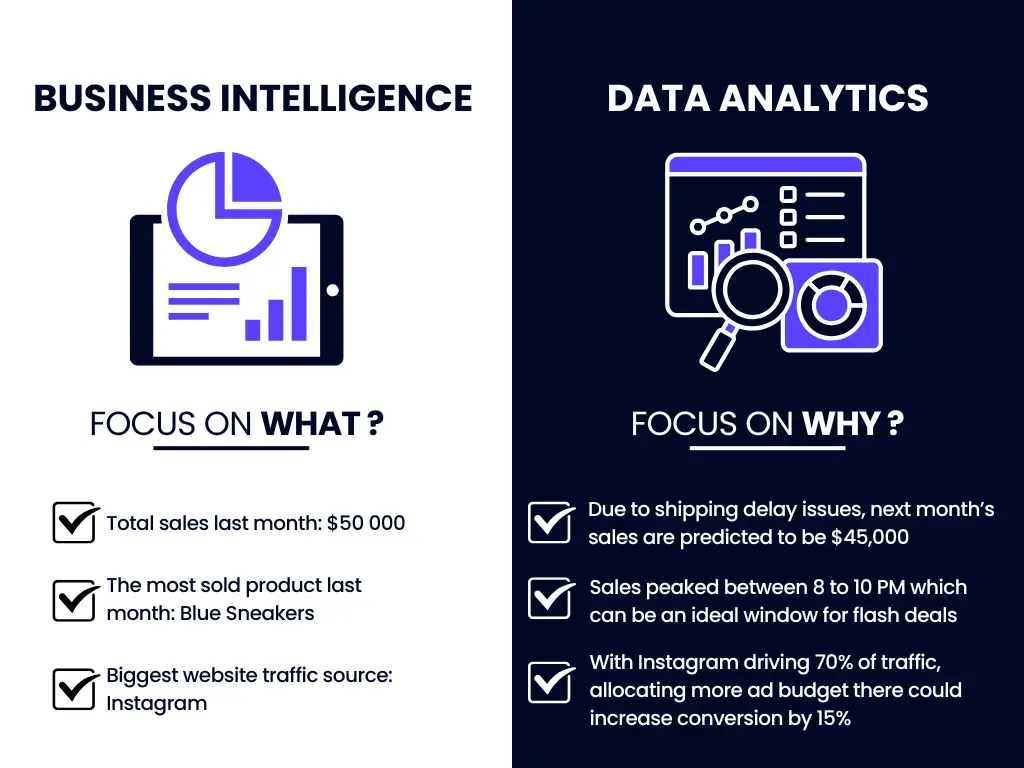
Quite straightforward, isn’t it? With BI, you focus on what happened, whereas with data analytics, you focus on why and forecast the future.
Here is a comparison table of other aspects that might help you understand the differences:
| Aspect | Business Intelligence | Data Analytics |
|---|---|---|
| Primary Focus | Historical and current data reporting | Pattern discovery and predictive analysis |
| Time Orientation | Past and present | Past, present, and future |
| Technical Barrier | Moderate – designed for business users but can be complex | Higher – often requires specialized skills |
| Output | Visualizations, KPI metrics, automated reports | Statistical models, predictive insights, recommendations |
| Decision Support | Operational and tactical decisions | Strategic planning and innovation |
| Process | Data collection → organization → visualization | Data exploration → statistical analysis → modeling → testing |
| Best For | Monitoring business performance, identifying trends, creating standardized reports, establishing a single source of truth | Discovering hidden patterns, testing hypotheses, predicting future outcomes, answering complex business questions |
To discuss some common misconceptions, we turned to the interviewing method.
Interview on Business Intelligence and Data Analytics
When working in the data world, you often hear the same misconceptions about data analytics and business intelligence. Sure, we could simply list them here for you, but it seemed more fun to take a different approach.
We reached out to professionals from different fields and asked them this question: What are the main differences between data analytics and business intelligence?
Non-Data Professionals
We knew that people who don’t regularly work with data would likely mention the most common misconceptions. That’s exactly what happened. We’ve picked two answers, keeping the answer authors anonymous to spare any red faces. However, their perspectives show exactly why there’s so much confusion out there.
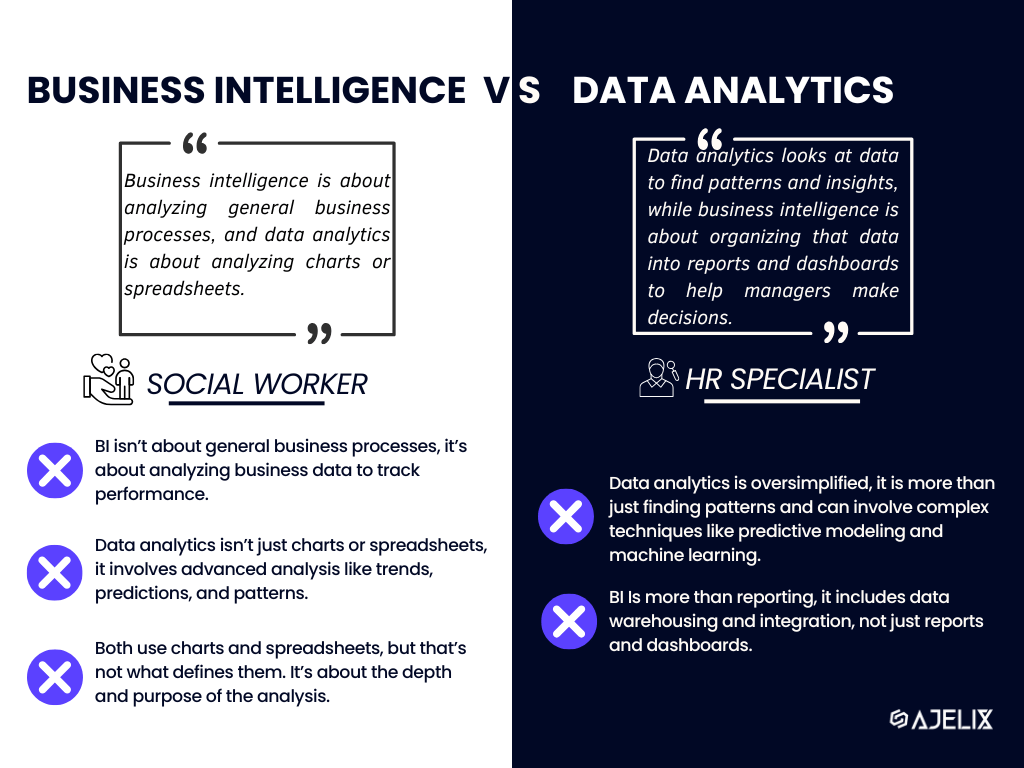
Both answers reflect various misconceptions, but most importantly, the generalization of both terms. This is something we notice most frequently.
You might be interested: 7 Business Intelligence Trends You Can’t Miss
Both fields can’t be generalized because they involve many complex details, like data handling, data integration, modeling, and deep statistical analysis. It’s not a simple child’s play, so to speak.
Data Professionals
To make things fully clear, we reached out for help to data experts.
Ajelix founders, with their 10+ years of industry experience, were the right call for this question.
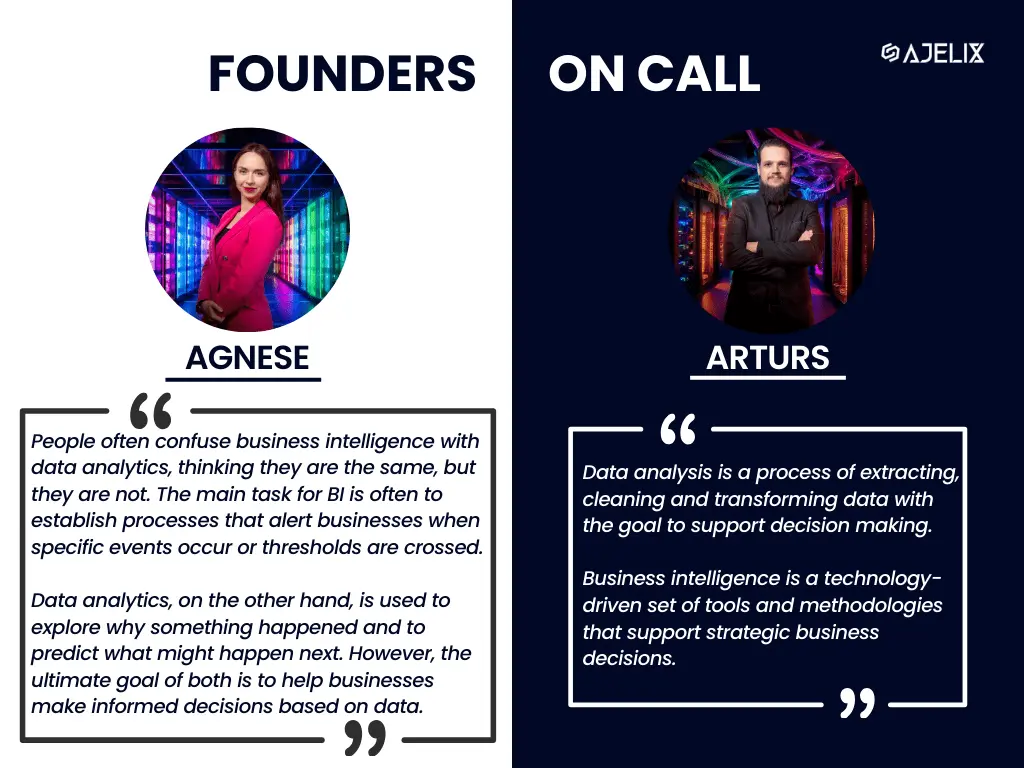
When asked “What are the main differences between data analytics and business intelligence?, data experts say this:
People often confuse business intelligence with data analytics, thinking they are the same, but they are not. The main task for BI is often to establish processes that alert businesses when specific events occur or thresholds are crossed. Data analytics, on the other hand, is used to explore why something happened and to predict what might happen next. However, the ultimate goal of both is to help businesses make informed decisions based on data.
Ajelix co-founder Agnese Jaunosane
Data analysis is a process of extracting, cleaning and transforming data with a the goal to support decision making. But business intelligence is a technology-driven set of tools and methodologies that support strategic business decisions.
Ajelix co-founder Arturs Jaunosans
Main conclusion?
Both BI and DA help to make data-based decisions, but they do so in different ways. Business intelligence provides the tools and structure for monitoring and reporting, while data analytics is a hands-on process that digs deeper to uncover causes and forecast future outcomes.
If you’re trying to figure out whether your business needs business intelligence or data analytics, just ask yourself this: Do you need sleek dashboards showing what’s happening right now, or do you need someone to connect the dots and tell you what’ll happen next?
Most probably, both.
Job Offers Experiment: Business Intelligence vs Data Analytics
It wouldn’t be us if we didn’t throw in another practical experiment. And what’s a more practical way to dive into the debate of business intelligence vs data analytics than job hunting?
So, we went to the job portal Indeed and ran a little side-by-side search. The mission? Compare real-world job postings for two popular roles: Data Analysts and Business Intelligence Specialists. Then we analyzed lots of listings to see what employers are looking for.
Why? Just to help you understand the real-world distinctions between Business Intelligence and Data Analytics roles, and show you how these roles function in today’s market. This is very useful if you’re exploring these paths.
Here is a visualization of our key findings:
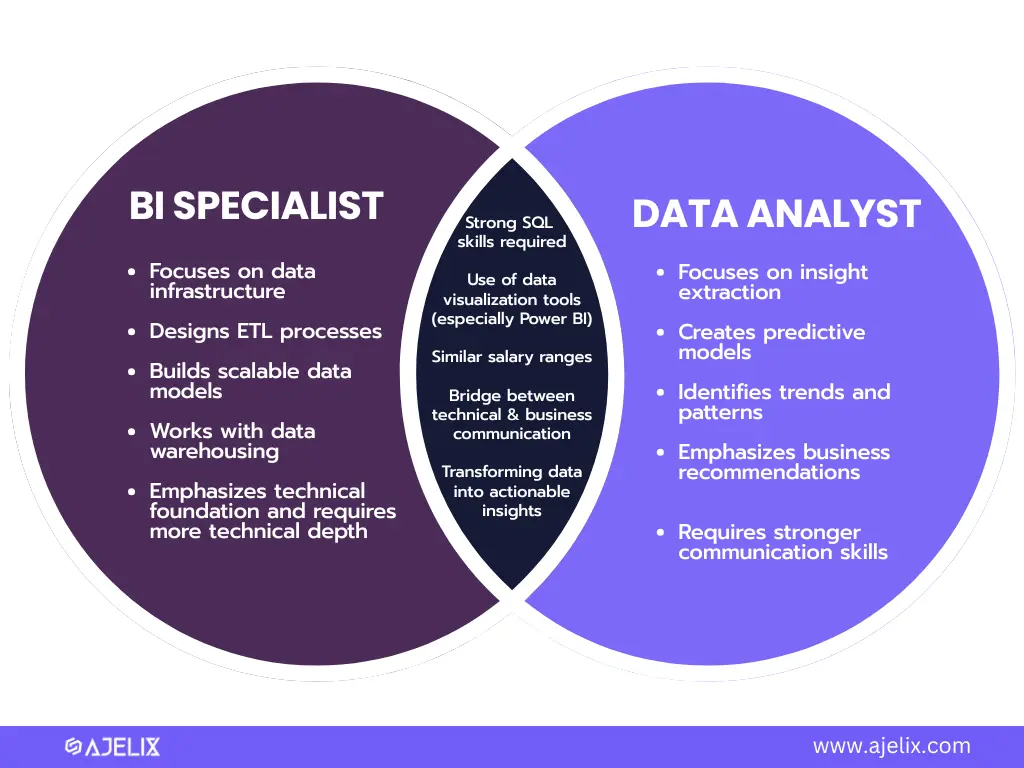
Both Business Intelligence Specialists and Data Analysts require strong SQL skills, use tools like Power BI, and act as a bridge between technical data and business insights. However, BI Specialists focus more on building data infrastructure and scalable models, while Data Analysts prioritize extracting insights and making business-driven recommendations.
The Entry Point Advantage
For those looking to break into the data field, Data Analyst positions offer a more accessible entry point. Here’s why:
- Lower Technical Barrier: Many advanced skills are listed as “nice-to-have” rather than required (yay!)
- Experience Requirements: Typically asks for ~2 years vs “extensive experience” for BI roles
- Transferable Skills: Greater emphasis on communication and business acumen
- Broader Application: Skills apply across more industries and departments
- Learning Curve: More gradual technical progression
While both career paths offer rewarding opportunities, data analysis provides a more approachable starting point.
Bear in mind that businesses value data analysts and BI specialists who follow recent trends. One of the 21st Century musts is the use of AI tools because they make the workflow efficient. Consider starting with Ajelix, as it is built for non-techies, has a freemium plan, and can be a good assistant and teacher.
Conclusion
The line between Business Intelligence vs Data Analytics may blur, but their differences matter. Business intelligence shows you what happened through structured reports, while data analytics reveals why and predicts what’s next.
The real catch? Knowing which approach fits your specific business questions. By applying the right data tools at the right time, you’ll transform information into action and gain that competitive edge every business seeks.
Interested to learn more about data-related topics? Feel free to explore our blog!
Wishing to stay in the research and tricks loop? Sure, let’s stay connected.
FAQ
BI focuses on understanding what has happened in the business through dashboards and reports, while Data Analytics dives deeper to explain why it happened and what could happen next using statistical models and forecasting.
While both roles share foundational skills like SQL and data visualization, BI Specialists often need stronger technical skills for data infrastructure and modeling. Data Analysts, on the other hand, lean more into statistics, pattern recognition, and communication.
Data Analyst roles are generally more accessible for beginners. They usually have a lower technical barrier and place more emphasis on communication and business acumen than deep technical expertise.
Power BI, Ajelix, Tableau, Excel, and SQL are widely used across both BI and Data Analytics roles. The choice of tools often depends on the company’s data maturity and team expertise.
From data to report in one minute or less with Ajelix BI
